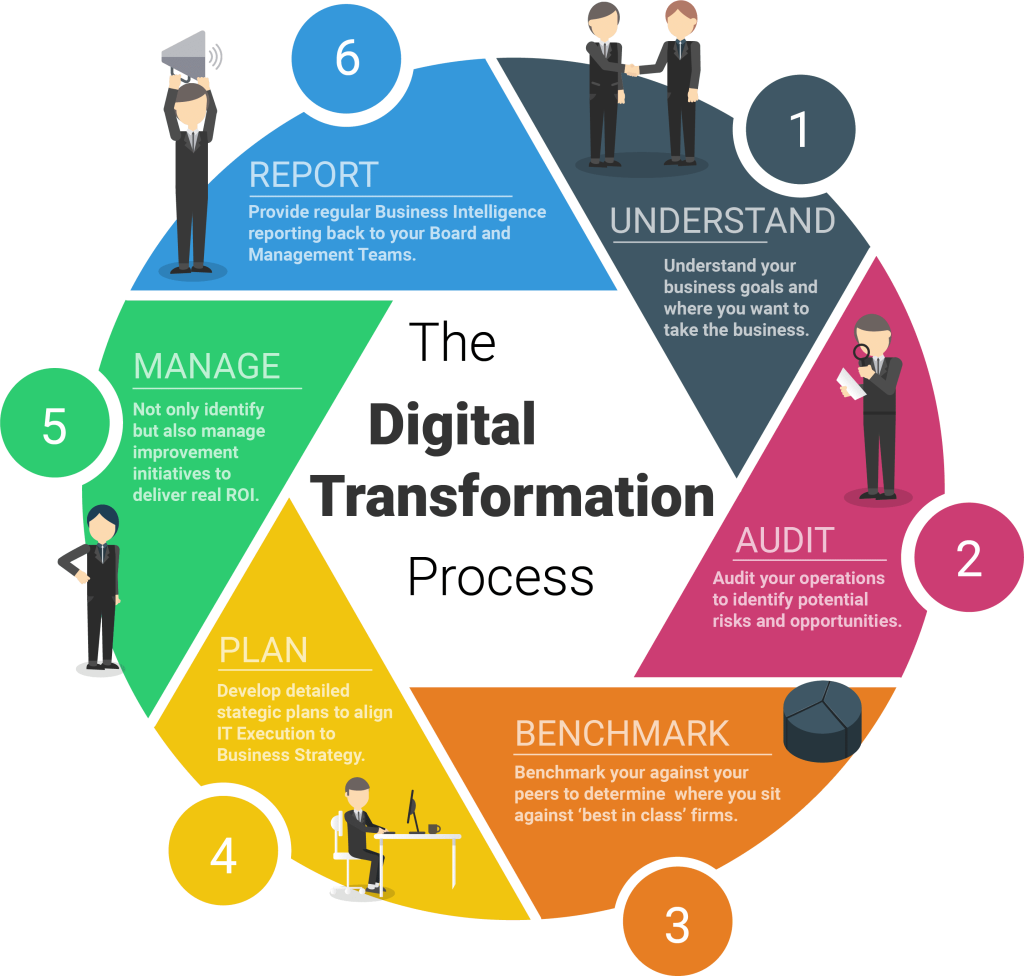Service Center
We provide curated Digital transformation migration plans, which refers to the process by which organizations integrate or update computing worflows into areas of their business, updating how you operate and deliver value to your customers. It involves a cultural shift that requires organizations to continually challenge the status quo, experiment, and get comfortable with failure. Here are the key components and aspects of digital transformation:
1. Technology Integration:
Moderninzing the current workflows and enterprise applications, such as ERP, CRM, contract management. Implementing advanced technologies such as cloud computing, artificial intelligence (AI), machine learning, and big data analytics to improve business processes and outcomes.
2. Customer Experience:
Enhancing customer interactions and experiences by leveraging digital channels, personalized services, and data-driven insights to meet customer needs more effectively.
3. Operational Efficiency:
Streamlining and automating business processes to increase efficiency, reduce costs, and improve productivity. This often involves the use of robotic process automation (RPA), AI, and other digital tools.
4. Business Model Innovation:
Developing new business models that leverage digital technologies to create new revenue streams, markets, and competitive advantages. Examples include subscription-based services, digital platforms, and online marketplaces.
5. Data-Driven Decision Making:
Using data analytics and business intelligence tools to inform strategic decisions, optimize operations, and identify new opportunities. This involves collecting, analyzing, and acting on data in real time.
6. Workforce Transformation:
Equipping employees with the skills and tools needed to thrive in a digital environment. This includes training, reskilling, and fostering a culture of continuous learning and innovation.
7. Digital Culture:
Promoting a culture that embraces change, encourages innovation, and values collaboration. This involves leadership support, employee engagement, and a willingness to experiment and take risks.
8. Cybersecurity:
Implementing robust security measures to protect digital assets, data, and systems from cyber threats. This includes adopting best practices in cybersecurity, compliance, and data privacy.
9. Customer-Centric Strategies:
Focusing on the needs and preferences of customers by leveraging digital tools to provide personalized experiences, improve customer service, and build stronger relationships.
10. Agility and Flexibility:
Developing the ability to quickly adapt to changing market conditions, customer demands, and technological advancements. This involves adopting agile methodologies, flexible IT infrastructure, and responsive business practices.
11. Collaboration and Communication:
Enhancing internal and external communication through digital collaboration tools, social media, and other digital platforms to improve teamwork and stakeholder engagement.
12. Innovation and R&D:
Investing in research and development to explore new technologies, products, and services that can drive growth and competitive advantage.
13. Legacy System Modernization:
Upgrading or replacing outdated systems and technologies with modern, scalable, and interoperable solutions to support digital initiatives.
Digital transformation is not just about technology; it's about rethinking how organizations operate, deliver value, and compete in the digital age. It requires a holistic approach that involves technology, people, processes, and culture working together to achieve meaningful and sustainable change.

